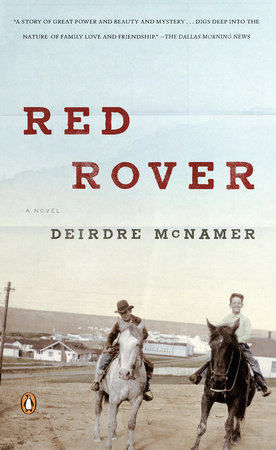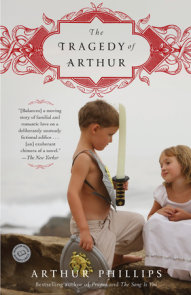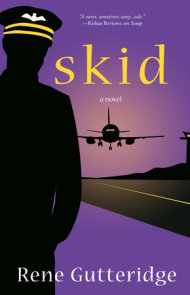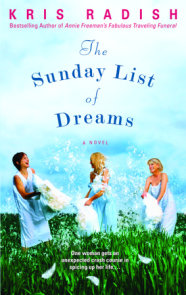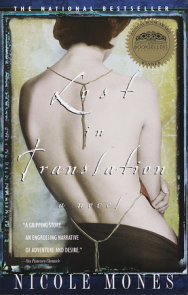READERS GUIDE
Questions and Topics for Discussion
INTRODUCTION
In the vast, open country of Montana in the 1920s, three boys travel the slow road toward adulthood. Two of them, Aidan and Neil Tierney, are carefree children who ride the plains and imagine themselves as Argentine gauchos. The third, Roland Taliaferro, lives a harsher, darker life as he struggles to hide his poverty and avoid the fists of his abusive father. The Tierneys and the Taliaferros would seem to have little in common, yet Aidan and Roland are brought together, first as law students at the University of Montana and then, more powerfully, on the eve of World War II, when an FBI recruiter persuades them both to join the Bureau. The Tierney brothers see the war as an opportunity both to serve their country and to be players on a larger stage. While his brother, Neil, learns to fly B-29s, Aidan volunteers for hazardous undercover work in Nazi-ridden Argentina. Enticed by the hope of finally achieving a sense of belonging, Roland Taliaferro immerses himself in a stateside assignment, intent on becoming the model G-man.
Near the end of the war, the once-confident Aidan returns home a strangely altered man, physically broken and morally disillusioned by the workings of the FBI. When questions arise as to Aidan’s loyalty, the Bureau gives his old friend Roland the job of monitoring Aidan’s movements and making sure his criticisms do not go too far. And then, under the most peculiar of circumstances, Aidan is found dead of a shotgun blast. In a confusing whirl that encompasses a grieving family, an incompetent coroner, and a Bureau desperate to stay unquestioned about Aidan’s death, the truth of it is almost irretrievably lost. Some of the secrets remain deeply buried until 2003, when the one man who knows what happened, now nearing his nineties, crosses paths by chance with Neil Tierney. A random moment of explosive violence triggers a startling admission, and lives that have long been out of joint fall startlingly into place.
Inspired by true events, Red Rover is the fourth novel by Montana author Deirdre McNamer. With her luxuriantly lyrical prose and her profound knowledge of the human spirit, McNamer uses events from her own family’s past to weave a taut drama that celebrates the exuberance of childhood while it sympathizes with the hardships of growing old. With both wisdom and precision, Red Rover deftly explores both the loves and loyalties that bring families together and the cruel happenstances that can drive them apart. Simultaneously, with cool political insight, it exposes some of the fears that lie closest to the American heart. Glimmering throughout this novel, like a promise, is the persistent hope that divided friends can reunite and old transgressors can be redeemed. As McNamer’s characters discover, it is never too late for these hopes to be realized.
ABOUT DEIRDRE MCNAMER
Deirdre McNamer grew up in Montana and now lives in Missoula, Montana. She received her M.F.A. from the University of Montana, where she is a professor of English. Her stories and essays have appeared in The New Yorker, Ploughshares, Doubletake, and The New York Times Book Review. Her previous three novels are Rima in the Weeds, One Sweet Quarrel, and My Russian.
A CONVERSATION WITH DEIRDRE MCNAMER
Q. Although Red Rover is unmistakably a book about the American West, you also evince a clear desire to go beyond the confines of regionalism and to speak generally about the problems and responsibilities of humanity. Which is more important to you as an artist: invoking the spirit of the places you call home or speaking more universally about the human condition?
A. I am interested in the peculiar, amazing, terrible and fascinating ways in which humans behave, wherever they happen to live. Though the American West is my home and I am very glad of that, it’s a region that has become romanticized and commodified to the point that its spirit sometimes has to go hide. Once I was hiking a desert canyon in Nevada and a woman ahead of us scrambled up a big rock, pointed down the canyon and called out to her friend, “Wouldn’t that be a wonderful screen saver?” What I don’t want to be, as a writer from the West, is any kind of screen saver.
Q. Although your prose conveys the austere beauty of the Montana landscape, you also do not shrink from illustrating the effects of the isolation that this landscape imposes on its inhabitants. What, in your view, are the best and worst aspects of life in Big Sky country?
A. There is enough space, and few enough people, that it’s easy to feel your own singularity. When you feel your own singularity, you tend to think of other people as individuals rather than as faceless forces or impediments, so you can afford to be civil and humane. That’s a good aspect. Also, much of this country is beautiful in a completely unfashioned way, the way a racehorse is, or a huge cat. It’s the kind of powerful and impervious beauty that can make you want to tip your hat, bow your head.
It can also be hard country in terms of its economics, its weather, its remoteness from the complicated excitements and consolations of the best cities.
Q. The story of Red Rover is deeply rooted in the experiences of your own family. Would you please outline for us the real-life events that stand behind your novel?
A. My father’s older brother was the inspiration for the character of Aidan Tierney. Like Aidan, he was an FBI undercover agent during World War II who died mysteriously of a gunshot wound after the war. To the grief of his death—he was a charismatic and beloved son, brother and friend—was added the official silence surrounding it.
My father’s life bears some resemblances to that of the Neil Tierney character, particularly the Neil of the book’s first three chapters, in which we see him as a boy on horseback, a B-29 pilot and a devastated brother. To his great credit, my father trusted me to fiddle at will with the rest of the story.
Q. Knowing that the truth about your uncle’s death has been kept in the shadows for so long must have given rise to some powerful emotions. Do you feel that now that your book has been written, you have a different understanding of or feeling about the mystery that began so many years ago?
A. In the year 2000, I obtained, through the Freedom of Information Act, my uncle’s FBI file. I also reviewed how the coroner was quoted in the newspaper after my uncle’s death, and compared her comments to the death certificate on file in the county courthouse. There were stunning discrepancies. The coroner had told the paper the shot was through the mouth. She filed a death certificate that said it was through the heart, and a “probable accident.” A memo to J. Edgar Hoover from the Butte, Montana, special agent in charge said the FBI had concluded, for various reasons, that the death was an accident. However, other documents in the file suggested that my uncle was a possible murder target because of his wartime work in Argentina, even after he was removed to the U.S. The family, staunch Catholics for whom suicide was anathema, only got the version the coroner gave the newspaper. Quite clearly, she lied—either to the newspaper or on the death certificate. Not a word from the FBI, ever.
My feeling then was anger. Anger that good people, patriotic people, people like my father who had, over and over, put their lives on the line for this country, were not provided a shred of real explanation or possible consolation for a devastating loss.
This book is my attempt to posit a scenario for that tragedy.
Q. Since Red Rover is based on fact, you may well have started writing with a pretty clear idea of the narrative you wanted to create. Nevertheless, were there ways in which the novel evolved as you were writing it that took you by surprise? In other words, is Red Rover a different book now from the one you initially planned?
A. I started this book with a simple question: Why would the coroner lie? To begin to answer that, I had to create that character, make her believable, make her interesting enough to engage readers even if they didn’t like her, and offer a plausible motive for what she did. That question led to others, including the big one: How did Aidan Tierney die?
I didn’t begin the book knowing the answers to those questions and others. I followed my nose. I did quite a lot of research and random reading. I wrote and rewrote and rewrote each section as well as I possibly could, trusting that if I got each sentence right, it would light up like a tiny flashlight and show me what needed to be written next.
I found myself surprised by many things, including images that seemed to want to repeat themselves throughout the book: a perfect cone of a mountain, something flying past in the dark, a campfire built in the middle of a road. I liked that. It felt like a photo negative, down there in the chemical bath, beginning to show itself as something coherent.
Q. Your writing a novel about your uncle’s death seems to be a somewhat paradoxical act. On the one hand, getting your uncle’s story onto paper may seem like a way of putting it to rest. On the other, making it public also means that people like me will be asking you about it over and over again. Do you regard Red Rover more as an act of closure or more as an act of opening up?
A. Nothing got put to rest, really, because this is fiction. But I think that a depiction of the possibilities goes some distance toward making it a human story instead of an inhuman, unreachable one. This book isn’t about solving a mystery, really. It’s about what is involved in trying to deal with one. And about keeping faith, I think.
Q. One of the many appealing aspects of Red Rover is its candid but sensitive treatment of old age. How have you come to achieve your insights into what it means to grow old?
A. When I was in my twenties, a wildly tactless doctor looked at full-body X-rays of my skeleton and said, rather exuberantly, “You have the bones of an 80-year-old!” He was talking about a very peculiar arthritic condition that I’ve lived with for a long time, and which has been largely addressed by orthopedic surgery. Though I have few outward signs of it, I’ve never forgotten what it felt like to be eighty when I was twenty-six.
More important, I have been close to a number of people who are old. It seems a very dramatic time of life to me. People you’ve known for years are dying all around you, your body is doing the strangest sorts of things, your memory is running around crazily or hiding under the bed, and you’re not supposed to make any kind of big deal about it!
Q. In Red Rover you write, “Great pain adding up to nothing, for nothing, about nothing—that’s what can’t be borne.” And, indeed, your more highly motivated characters seem driven to seek justifications for the sufferings they have both inflicted and undergone. To what extent do you think it is really possible to find justifications for the pain we suffer in life?
A. Far wiser people than I have struggled endlessly with that question. I can only say that I don’t think of suffering as something than can be justified—understood might be the better word—but I do think there is something interesting and valiant in the way so many humans keep trying to wrangle with the meaning of it and the consequences of it.
Q. The photograph that appears on the cover of Red Rover is a McNamer family memento. What personal associations does it hold for you, and how, in your mind, does it relate to the written text of your novel?
A. That is an enlargement of a very small, water-stained photo I found in a family album. The boy on the left is my uncle and the one on the right is my father. It’s about 1927, in the little railroad town of Shelby, Montana. I love it because of its movement, its exuberance, and the way it captures the characters of these boys I reimagined for Red Rover.
Q. Aidan Tierney’s ideals clash violently with the currents of American foreign policy that run through Red Rover, so much so that it is hard to defend one without condemning the other. Do you see an inescapable conflict between ideas of individual morality and the necessary evils of policymaking?
A. As long as we accept that what we know to be evil is somehow necessary, then individual morality doesn’t have much of a shot, does it?
Q. At a time when there are fewer and fewer veterans of World War II still among us, and much adulatory attention has been given to our “greatest generation,” Red Rover pointedly declines to romanticize the war or its consequences. Why?
A. Because any war is young, brave people from one country or society being sent out to kill young, brave people from another country or society. By the thousands and tens of thousands and, as in the case of World War I, by the millions.
I think many of us feel ourselves caught up in a time in which it is hard to imagine believing in anything so fervently we are willing to die for it. So it’s tempting to decide that those who have died in wars did so as a result of beliefs whose straightforwardness and power we envy. But that’s too easy. Ask any veteran of any war. People also die in war as a result of the misjudgments, stupidity, arrogance and greed of those who, in one way or another, send them to it. Right now, it seems a particularly good idea to remember that.
Q. Writing Red Rover obviously carried you back into the past. Although the novel readily accepts that no time is ever perfect, did you ever catch yourself wishing that you had lived in the times that shaped your characters?
A. When I was a child in the ’50s and ’60s, my life in Montana seemed to offer an enormous amount of physical freedom and unscheduled time, which encouraged extended episodes of imagination and a sense that I could handle myself in the outdoors, on a horse, on skis, in rough weather. That was a great gift, and I’m sorry more children today don’t experience that. I was trying to capture that freedom in Red Rover’s opening chapter, which is set in the ’20s, though I can’t say I yearn to have lived in that time, specifically. I think we all want to have lived in times that conferred great possibility and freedom and hope, and no time, per se, offers those things to everybody. As I think my buddy the writer James Crumley once declaimed, “Things just aren’t the way they used to be, and, what’s more, they never were.”
DISCUSSION QUESTIONS









